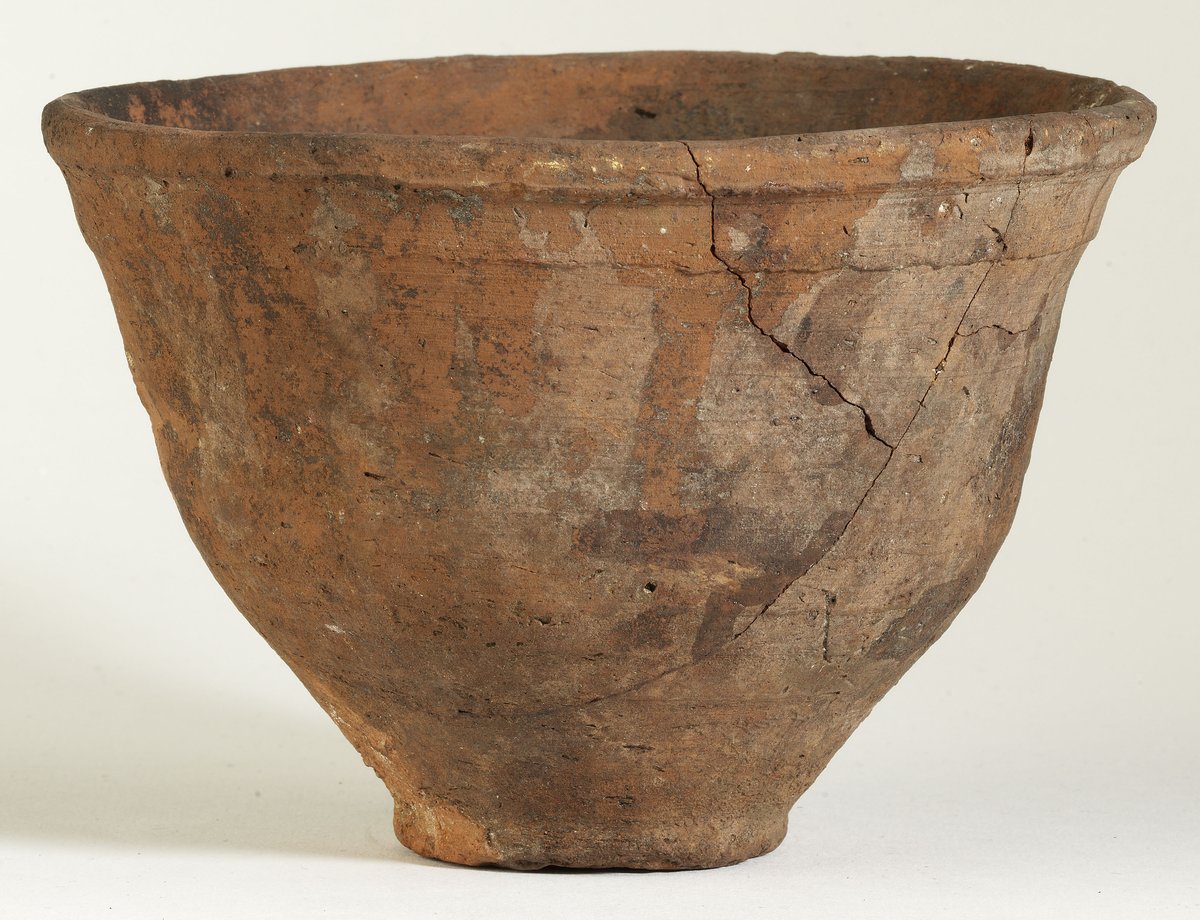
Vessel
Egyptian Art
| Place of production | Egypt |
|---|---|
| Date | 5th-2nd centuries B.C. |
| Object type | tomb equipment |
| Medium, technique | Wood, painted |
| Dimensions | 72 x 48 cm (28 3/8 x 18 7/8 in.) |
| Inventory number | 98.5-E |
| Collection | Egyptian Art |
| On view | Museum of Fine Arts, Basement Floor, Ancient Egypt, Daily life |
On the upper end of the wooden anthropoid coffin lid fragment, the remaining lower part of the stylized wesekh-collar can be seen. Under the collar, the sun god in his winged scarab manifestation, holding the sun disc, can be observed. His figure is succeeded by the winged sky goddess (Nut) crowned by the sun disc on the head, stretching out her wings and arms in order to protect the deceased lying inside the coffin. She holds maat-feathers in both hands, which symbolize the maintenance of cosmic order. In the upper corners, next to both feathers, the composition comes complete with a figure of a ram. Rams have strong chthonic qualities, being closely linked to the nocturnal aspect of the sun god who traverses the netherworld every night.
In the next scene panel, the mummified deceased is represented as lying upon the lion-headed funerary bier in the purification tent. Anubis is just adding the finishing touches to the mummification process. The four canopic jars containing mummified viscera line up under the bier. On the lids are depictions of the four Sons of Horus, divine protectors of the organs. At both ends of the bier, a goddess is mourning for the deceased who wishes to identify with Osiris in his rebirth. The scene evokes the context and illustration of Chapter 151 of the Book of the Dead.
The lowermost scene of the fragment represents a barque with the mummified deceased lying in a naos. The crew consists of an oarsman at the prow and a steersman at the stern. The scene depicts a ritual voyage: either the crossing of the Nile, during which the deceased was transported to the western bank of the river where most of the cemeteries were located or a pilgrimage of the dead to one of the sacred places (e.g., Abydos).
This record is subject to revision due to ongoing research.